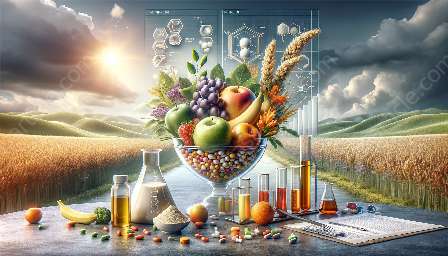Food storage and preservation are essential processes in ensuring a reliable food supply and minimizing food waste. These practices encompass a wide range of techniques, from traditional methods to modern food technology advancements. This comprehensive guide explores the interplay between food storage, preservation, food technology, and nutrition science, providing insights into the best practices and innovations in this critical field.
The Importance of Food Storage and Preservation
Food storage and preservation play a vital role in food security, allowing us to store surplus food for later consumption and extending the shelf life of perishable items. By preserving food, we can also reduce food waste, ensuring that valuable resources are not squandered. In addition to practical benefits, proper food storage and preservation contribute to maintaining food safety by minimizing the risks of contamination and spoilage.
Traditional Preservation Methods
Throughout history, various cultures have developed traditional preservation techniques to prolong the shelf life of food. These methods include drying, salting, fermentation, pickling, and smoking. Each method harnesses natural processes to inhibit the growth of microorganisms and enzymes that cause food spoilage. Despite the advancements in food technology, many of these traditional practices continue to be relevant and are appreciated for their unique flavors and nutritional benefits.
Modern Food Preservation Technology
Advancements in food technology have revolutionized the field of food preservation. Innovations such as vacuum packaging, high-pressure processing, and ultra-low temperature freezing have enabled us to preserve the quality and nutritional value of foods while extending their shelf life. Additionally, the development of food additives and preservatives has provided new avenues for preserving food without compromising taste or safety. The integration of food science and technology has led to the creation of novel preservation methods that meet the demands of contemporary consumers.
Role of Nutrition Science in Preservation
Nutrition science plays a crucial role in guiding food preservation practices. It provides insights into the impact of preservation techniques on the nutritional content of foods. Preservation methods must be carefully designed to minimize nutrient loss and preserve the beneficial components of food. Understanding the dynamics of nutrient degradation during storage and processing empowers us to make informed decisions about the most suitable preservation methods for different types of food.
Best Practices in Food Storage
Proper food storage is fundamental to preserving the quality and safety of food. Understanding the optimal conditions for storing different food items, including temperature, humidity, and packaging, is essential for preventing spoilage and maintaining freshness. Whether it's pantry staples, fruits and vegetables, or perishable goods, following recommended storage guidelines can significantly extend the shelf life of food while retaining its nutritional value.
Cutting-Edge Innovations in Food Preservation
As technology continues to advance, new methods of food preservation are emerging. From intelligent packaging solutions that monitor and control the environment around the food to non-thermal processing techniques that preserve food without compromising its sensory attributes, the future of food preservation is filled with exciting possibilities. These innovations are shaping the way we approach food storage and preservation, offering sustainable and efficient solutions for preserving the global food supply.
The Intersection of Food Preservation and Nutrition
Ensuring that preserved foods maintain their nutritional integrity is a primary concern for both food technologists and nutrition professionals. By collaborating to understand the impact of preservation methods on nutrient retention and bioavailability, these experts can contribute to the development of preservation strategies that align with nutritional goals. This interdisciplinary approach emphasizes the importance of integrating food technology and nutrition science to meet the diverse needs of consumers and promote food security.
Conclusion
Food storage and preservation are dynamic fields that resonate with the principles of food technology and nutrition science. As we continue to enhance our understanding of preservation methods and develop innovative technologies, we pave the way for a more sustainable and resilient food system. Embracing the art and science of food storage and preservation allows us to honor culinary traditions, minimize food waste, and safeguard the nutritional value of our food supply, ultimately ensuring a healthier and more secure future for generations to come.

